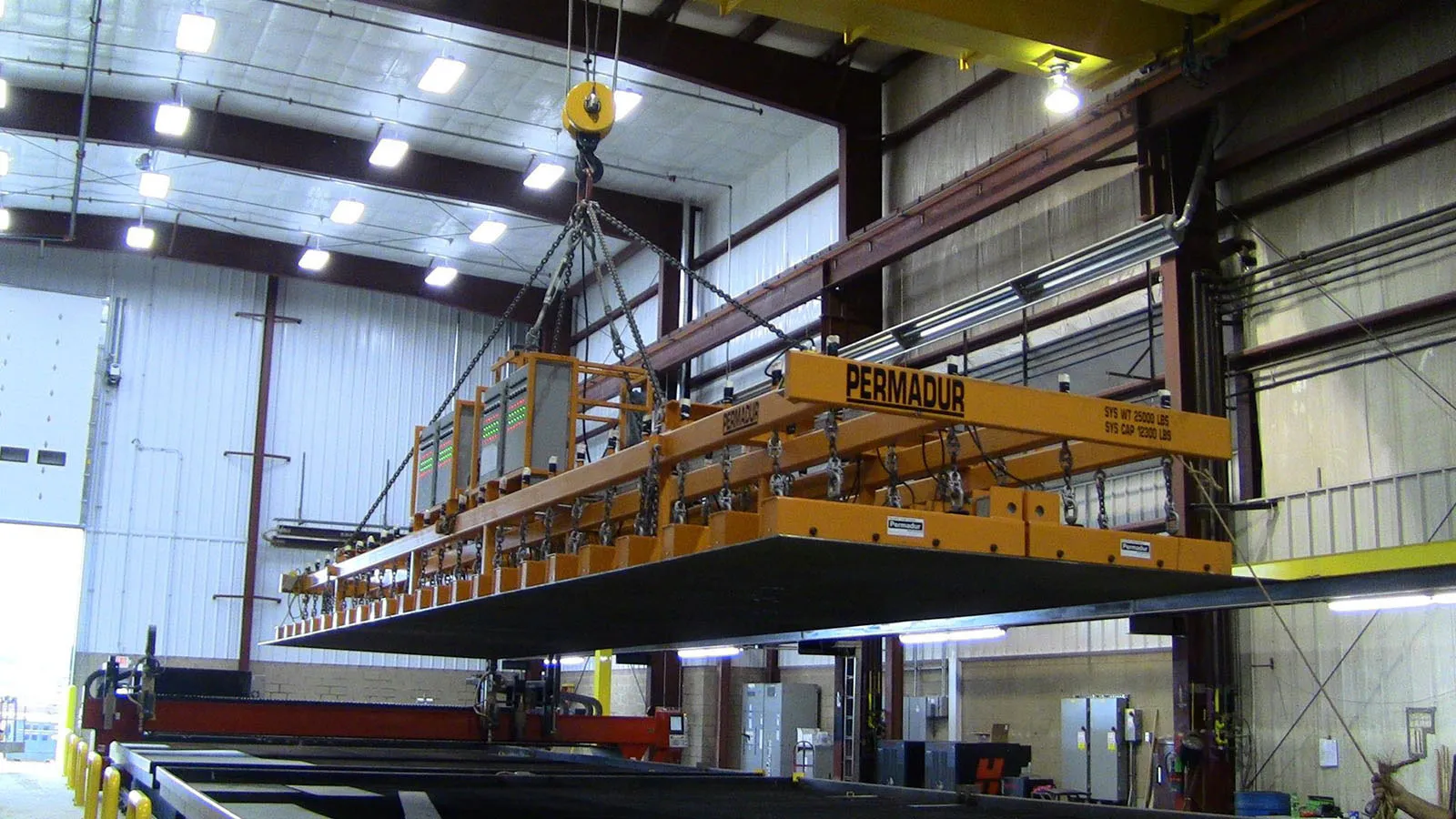When selecting the appropriate material handling magnet for your operations, it's crucial to grasp the specific features and benefits of different magnet types. This extends beyond the choice between Rectangular or Bipolar magnets; it's about how they align with your safety, efficiency, and overall operational goals. There are several options to consider when choosing a permanent lifting magnet.
Safety and Load Capacity
One of the initial factors to consider when assessing a permanent lifting magnet is its load capacity and safety features. In industries such as steel fabrication and shipbuilding, the ability to lift heavy materials with minimal risk is of paramount importance.
- Rectangular Magnets offer a higher Safe Working Load (SWL) for flat materials like sheets and blocks, ranging from 600 to 4000 lbs. This makes them ideal for single-plate handling applications, such as in steel service centers.
- Bipolar Magnets, on the other hand, are designed for more complex shapes like rounds and angles. While their Safe Working Load (SWL) might be lower (250 to 1000 lbs), they provide more versatility for industries like heavy equipment manufacturing or tower construction, with safety features that ensure secure lifting.
If you prioritize handling heavy, flat materials with maximum load capacity and safety, go for Rectangular Magnets. However, if you're dealing with more complex shapes and need versatile material handling, the Bipolar Magnet is the better choice. Both types offer a 3:1 or 4:1 safety factor, ensuring safe lifting even in challenging conditions.
Energy Efficiency and Power Consumption
Power consumption is another critical component. Reducing operational costs while ensuring consistent performance is essential, especially in industries that require frequent lifting.
- Rectangular Magnets stand out in terms of energy efficiency. They consume no power during the lift, significantly lowering energy costs. Additionally, they do not require backup battery systems, making them an economical choice for industries like metal fabrication.
- Bipolar Magnets, while similarly energy-efficient, provide more specialized control for handling rounds and angles, ensuring you get precision without unnecessary power drain.
For industries where energy savings are a priority, such as structural steel fabrication or metal fabrication, Rectangular magnets are the top choice due to their lack of power consumption during lifts. However, if your operation involves more complex material shapes and needs controlled precision, the Bipolar Magnet offers efficiency with added versatility.
Versatility and Material Compatibility
Your industry's material handling needs will also determine which magnet type is most compatible with the materials you work with. This is where each magnet type's versatility comes into play.
- Rectangular Magnets are specialized for handling flat materials such as sheets, plates, and blocks. Their design allows for single plate handling, preventing the accidental pickup of burn table slats or unwanted materials. These magnets are ideal for industries that work predominantly with flat or block-shaped steel.
- Bipolar Magnets are highly versatile and designed to handle flat materials, rounds, angles, and structural components. By adding customized pole shoes, Bipolar Magnets can easily transition between handling different shapes, making them highly suitable for industries that need to adapt to different material shapes, such as rail car manufacturing and tower manufacturing.
If your industry primarily handles flat steel or block materials, stick with Rectangular Magnets. However, for industries where material diversity (like rounds, angles, and plates) is common, the Bipolar Magnet offers the flexibility to handle all these materials efficiently.
Ease of Maintenance and Durability
Another critical factor to evaluate is the ease of maintenance and the durability of the magnet system. Maintaining magnets without external support is essential for reducing downtime and running operations smoothly.
- Rectangular and Bipolar Magnets are built with relay analog control systems, making field maintenance simple and straightforward. This means your team can maintain the equipment on-site without needing specialized technicians, minimizing downtime.
- Additionally, Permadur magnets are unaffected by cold temperatures and built for great durability, making them highly reliable in industries that work in extreme conditions, like shipyards or outdoor steel service centers.
Regardless of the material you handle, both Rectangular and Bipolar Magnets provide high durability and easy maintenance. If your industry requires magnets that can withstand challenging environments without frequent servicing, either Permadur magnet type will meet your needs.
Which Permanent Lifting Magnet is Right for You?
Choosing the right permanent lifting magnet is more than just comparing models; it's about evaluating the components that matter most to your industry's needs. Rectangular Magnets are the ideal solution for industries handling flat, heavy materials where load capacity and energy efficiency are the top priorities. However, for industries needing versatility to handle various shapes, Bipolar Magnets provide the flexibility you need without sacrificing safety or efficiency.


